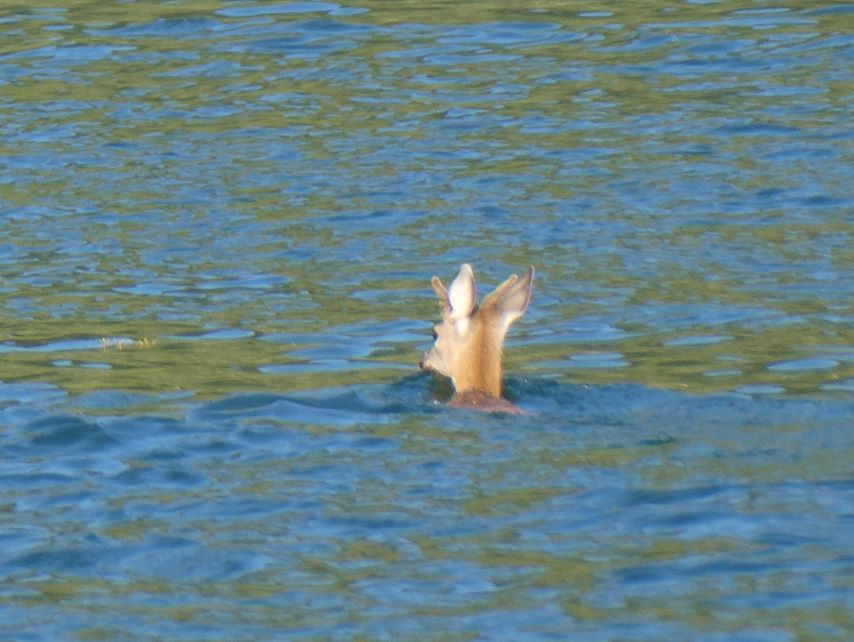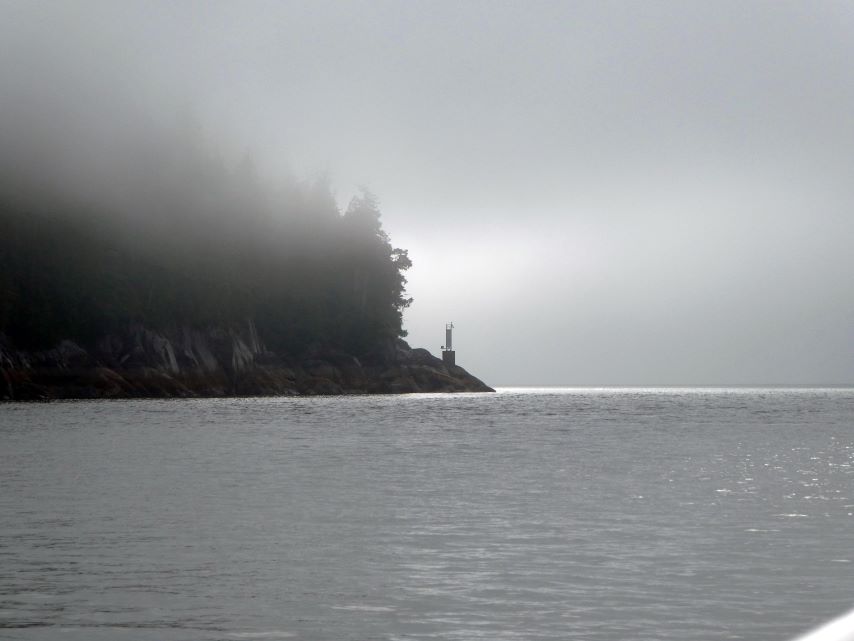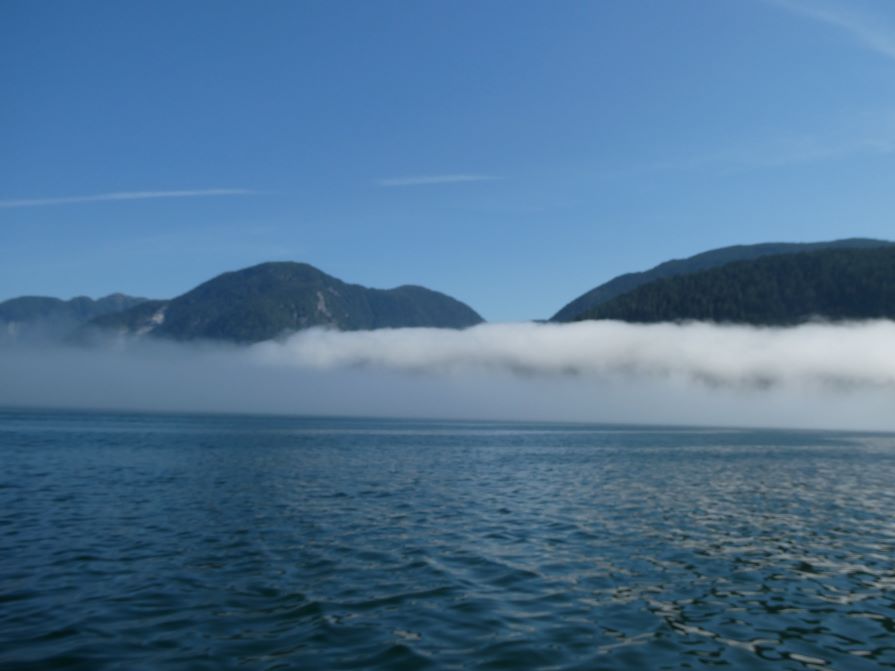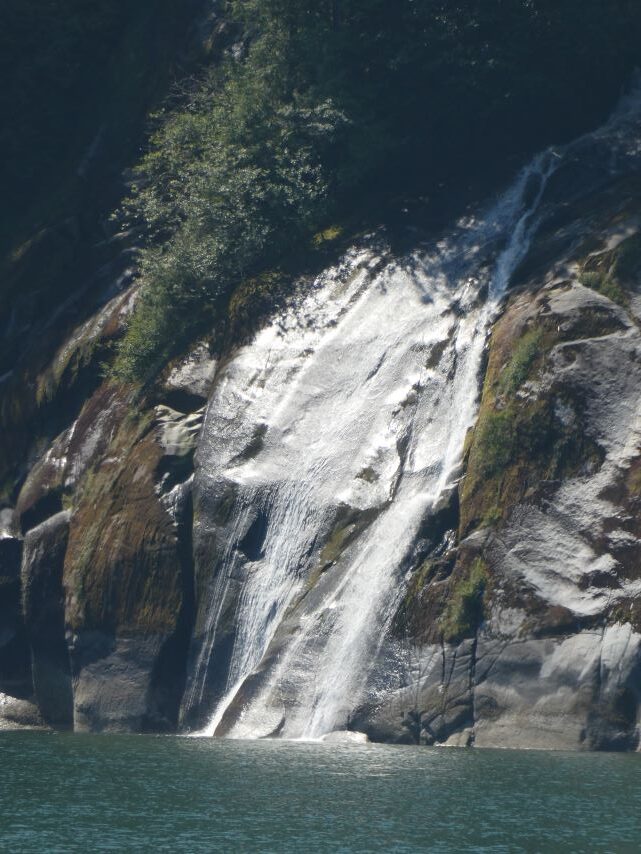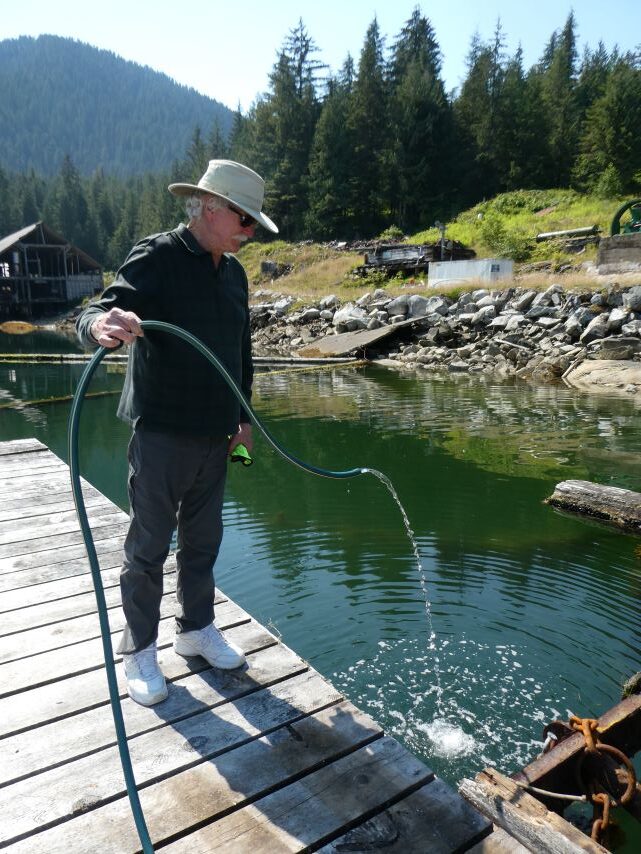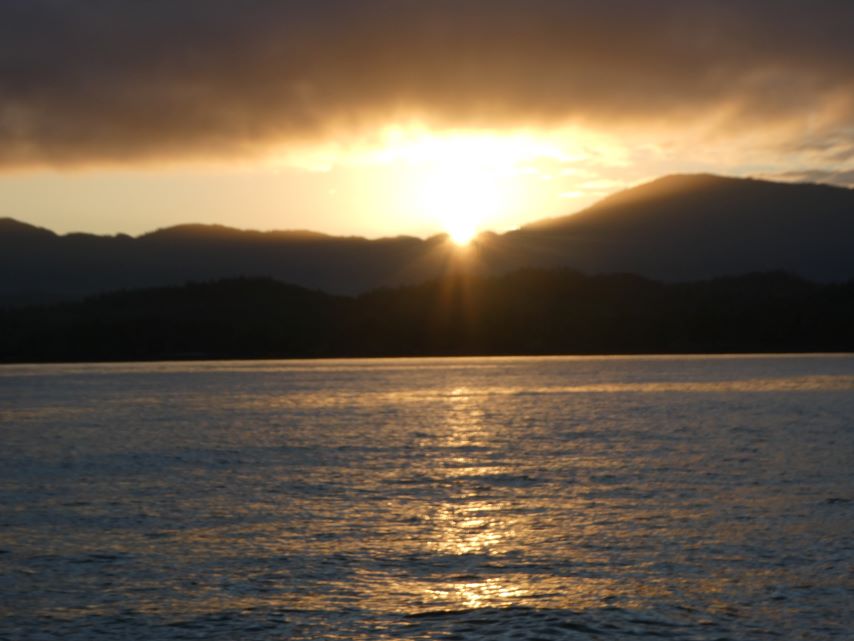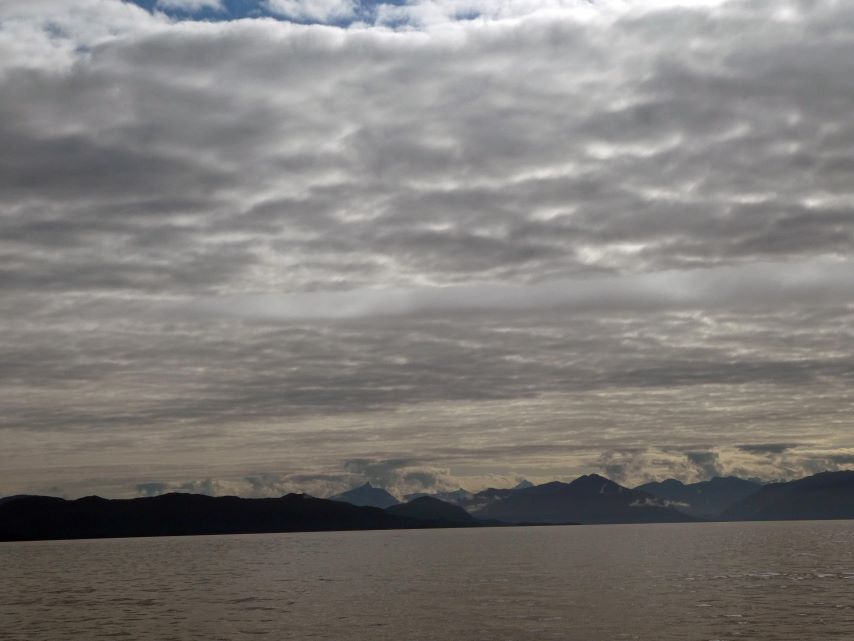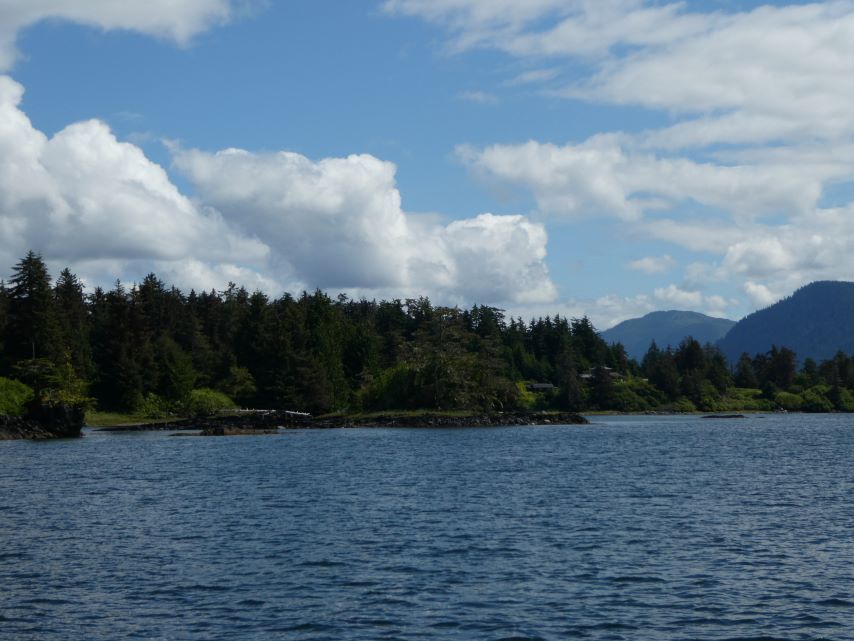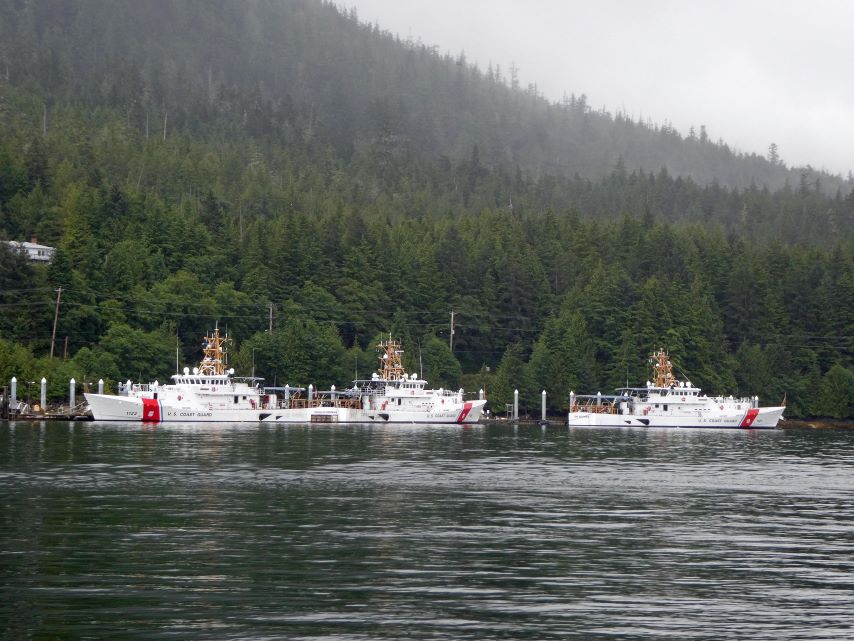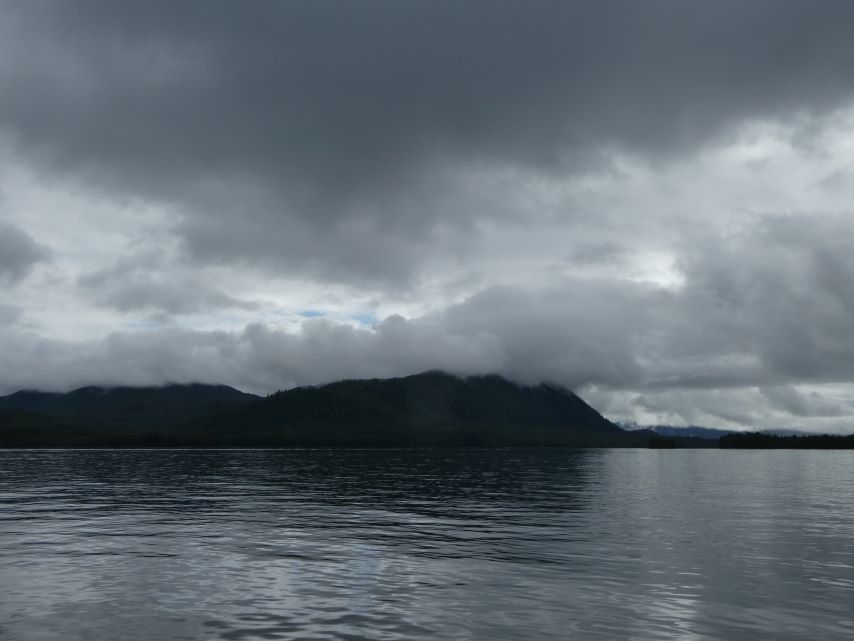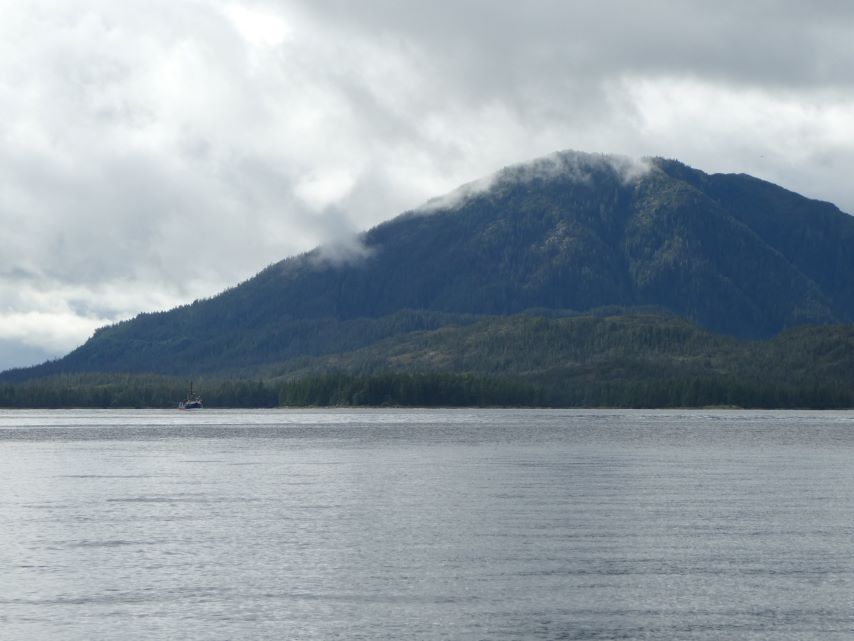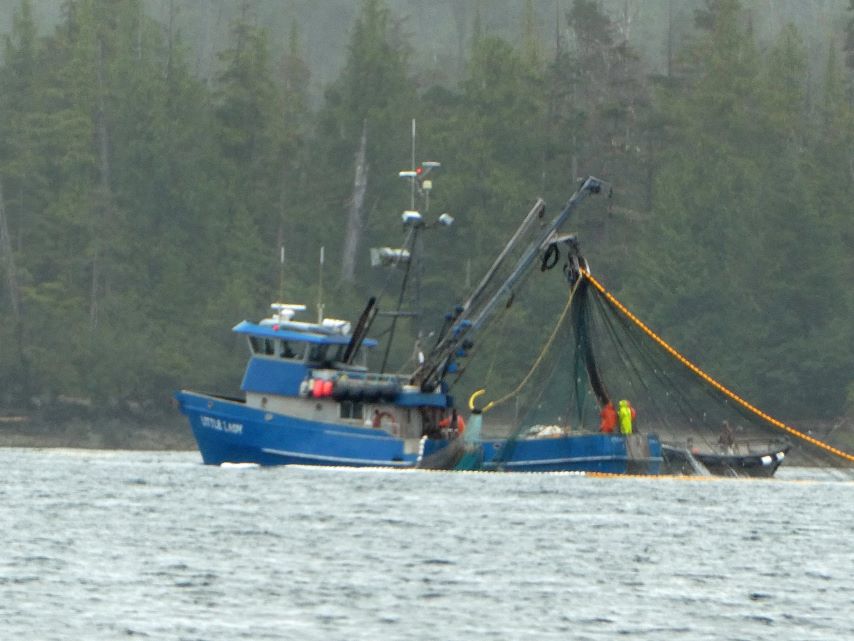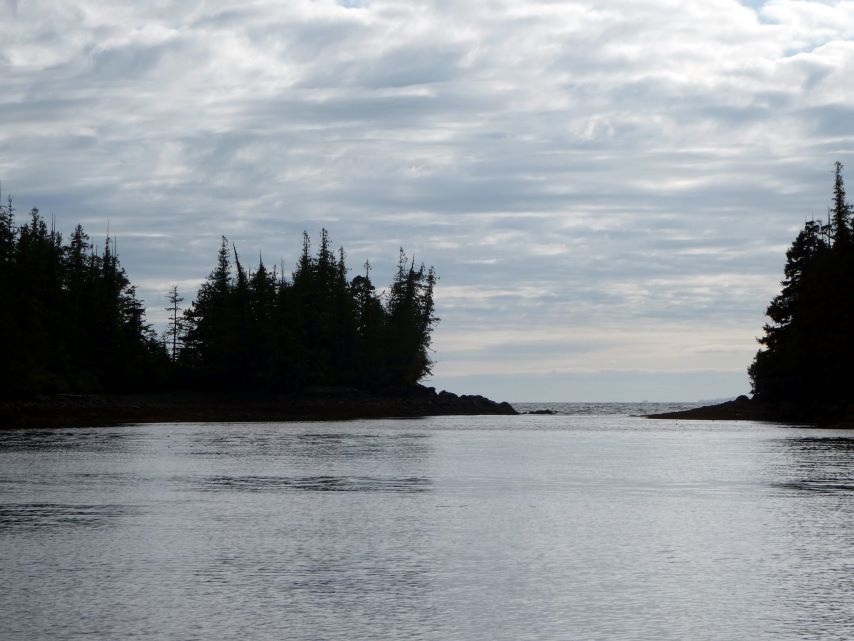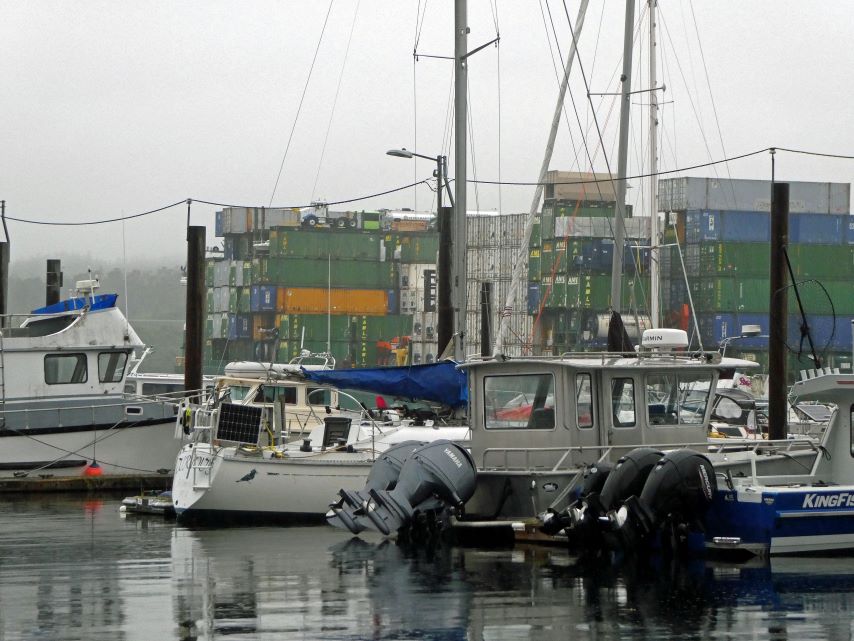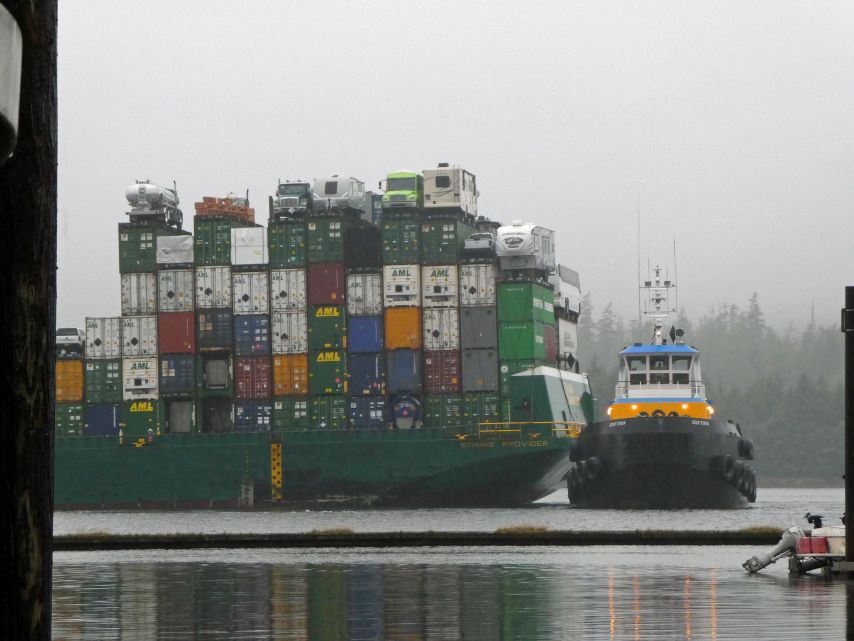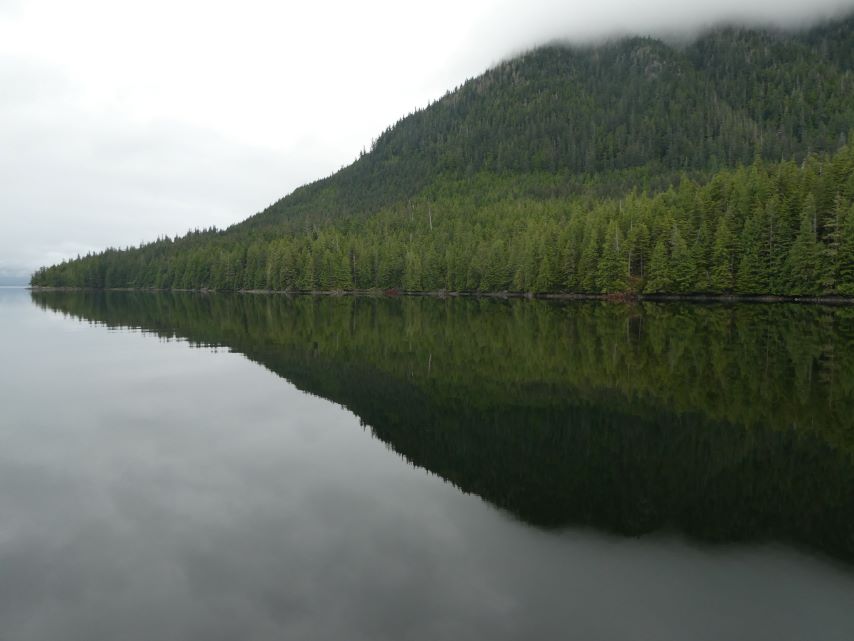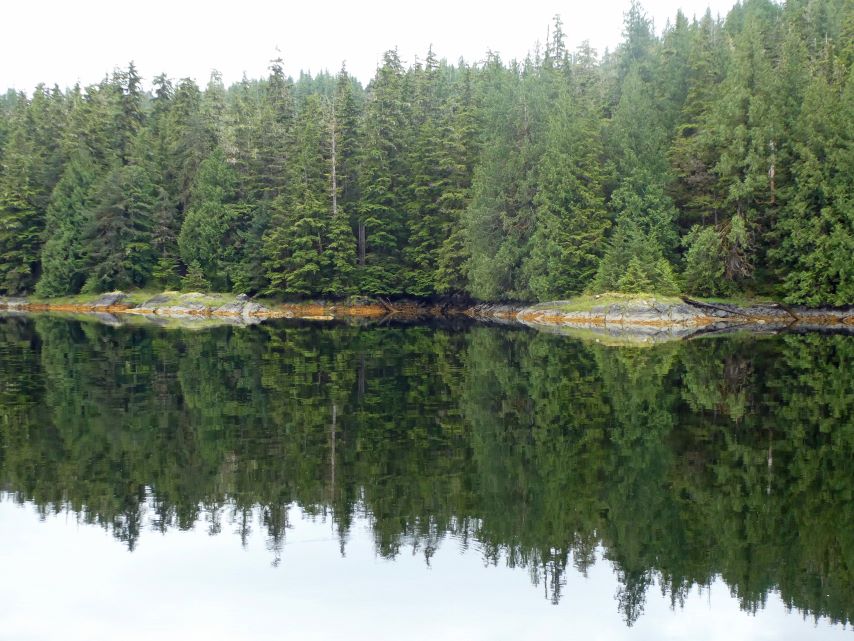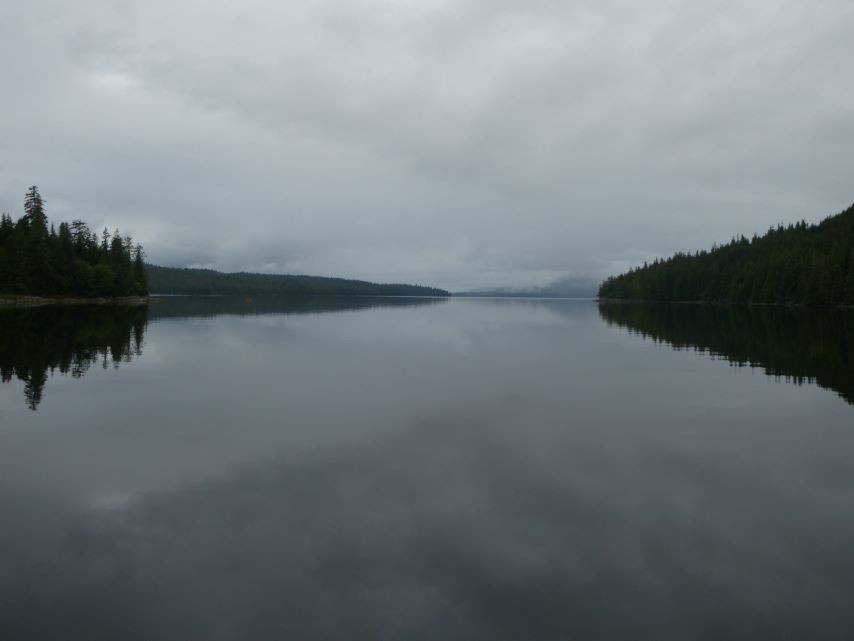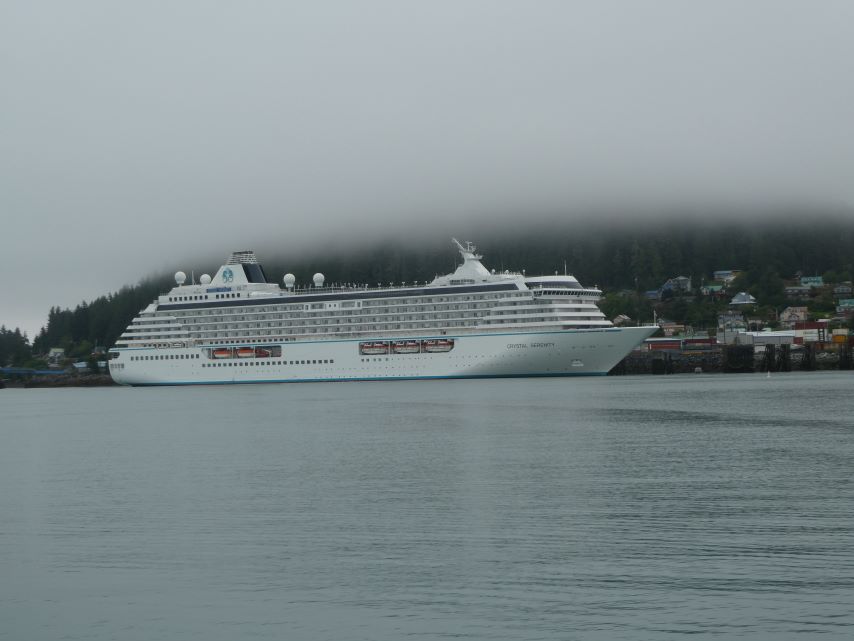August 6, 2024 – Tuesday
Today has been a fascinating day, filled with the wonders of wildlife. As we left the anchorage, we were greeted by harbor seals sunning themselves on the rocks of a navigation marker. A young buck deer swam gracefully across the bay, and a huge steller sea lion swam by the starboard side of Paradigm Lost, adding to the morning’s excitement.
Entering Wright Channel, we spotted a pod of whales about a mile off. All of a sudden, we were startled by a huge humpback surfacing not more than 3 boat links off of our port bow! We slowed the boat make sure there were no others around just in time to see him hump his back and dive, exposing an enormous tail. The thrill of seeing these magnificent creatures was short-lived as we were soon enveloped in fog for most of the morning. When the fog finally dissipated, we were treated to the stunning sight of mountains and waterfalls along Fraser Reach.
Arriving at Butedale, we were welcomed by an eagle soaring overhead and an otter catching a salmon for his evening meal. We spent the afternoon exploring the ruins of the old Butedale Cannery, a site rich in history. From 1911 until the 1970s Butedale was a bustling hub for the processing of various types of fish. Currently the area is in ruins but the new owners have plans to develop Butedale as a combined marina, high-end resort, and water-bottling plant. It will be interesting to see what develops in the next few years.

